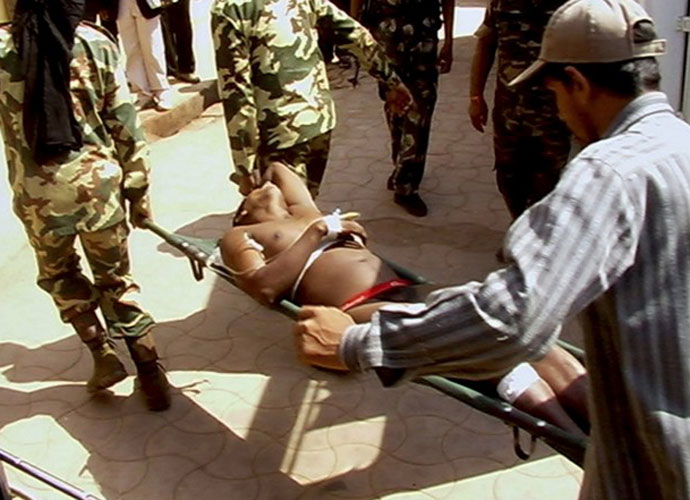Why CRPF is losing its jawans again and again

It was seven years ago on April 6, 2010, that 75 CRPF personnel belonging to 62 Battalion along with one police official died in a fire assault carried out on them by Maoists at Chintanlar in Odissa. There was no known causality to the Maoists and they took away a large quantity of arms, ammunition and equipment. The absence of casualty among the Maoists indicated the ineffectiveness of the retaliation, if any. The two officers commanding the patrol also lost their lives.
Case studies indicate that soldiers were huddled up for the night in an area less than the size of a football ground. Earlier, during the day, they had lost a wireless set in a nearby village and were compelled to halt at that location as they had got delayed while trying to find it.
That the soldiers were huddled in a small place without adequate security measures implies failure of command. The jawans, if they had followed proper drills, should have been in a “harbour” spread over a much larger area with sentries deployed for early warning, by occupying the surrounding heights.
Such deployment would also have prevented the main body of the patrol from coming under direct fire of militants. Sentries should have been so placed that they were poised for immediate retaliation. It was for the commanders to ensure that these basic precautions were taken and troops remained alert to any danger.
Last week another incident took place in the heart of Srinagar near Pantha Chowk when militants, in spite of a “road opening party”(ROP) laid by CRPF itself being in position, attacked their convoy and caused causalities, killing one CRPF jawan, injuring five and also injuring one civilian girl. There are no known casualties to militants.
In a similar incident near Udhampur last year, militants attacked a BSF convoy killing one jawan. Retaliation by troops of the BSF led to killing of a militant and apprehension of another. The militants had broken the security cover provided by the ROP which coincidently was also placed by the CRPF.
In yet another incident last month at Sukma in Chhattisgarh, the CRPF ROP consisting of over 100 personnel, going out from their post for deployment, lost 12 jawans in an ambush by Maoists. Again there was no sign of any causality to the Maoists.
There are reports that the force suffers from inadequacy of modern gear like “mine-protected equipment" and the government is not able to spare enough funds to procure the equipment in spite of being authorised long ago. Well, that may be so and the equipment may actually have advantages. What is more important is whether the troops are trained and confident enough to operate with the existing equipment?
 |
| There are reports that the force suffers from inadequacy of modern gear like “mine-protected equipment" and the government is not able to spare enough funds to procure it in spite of being authorised long ago. |
I cannot help quoting from my own experience in late 1999, when my unit was inducted to replace the CRPF unit at Churachandpur in Manipur. The highway from Imphal to Churachandpur - a distance of about 65 km - had witnessed many ambushes on CRPF convoys. Seeing the gravity of the situation, I made my troops walk most of the distance on foot, spread wide along the road in order to prevent militants coming close to the highway and causing any causality.
The task of my unit, besides carrying out domination of Churachandpur town and the surrounding area, was to provide ROP thrice a week along the Imphal axis. We rarely deployed the ROP along the road nor were the detachments placed at fixed points as a routine. Thus always keeping the initiative with us and preventing militants from surprising us.
ROPs are deployed to ensure secure passage to convoys. It doesn’t speak highly of the training and tactical acumen of commanders if these ROPs themselves get ambushed or if the security cover provided by them is repeatedly breached.
It is a given that causalities will occur in a combat situation but repeated losses without anything to show by way of achievement is indicative of some deep-rooted problem with the training, leadership and operational strategy and tactics.
It is nobody’s case that the CRPF doesn’t need modern equipment. It must be provided at the earliest to facilitate better operational effectiveness. However, the commanders need to contemplate as to why such repeated failures are occurring.
In my view, the biggest problem has been caused by exponential growth of the force within a span of a few years, thus putting a heavy burden on available training infrastructure, irretrievably diluting the standards of training of leaders and also troops. The situation further gets complicated because of the inexperience as well disinterest of higher level leadership, which is inevitably on temporary lien.
Another major problem with CRPF is the lack of regimentation in units. With the troops being rotated every few years there is no continuity and thus there is no bonding among troops or between commanders and troops. This also precludes the commanders from intimately knowing the capabilities and limitations of their troop.
Finally, what more can be representative of the rot and lack of priorities of decision-makers than the fact that a force as important as CRPF is headless for over a month now?

